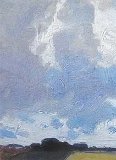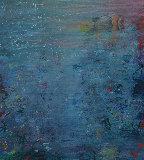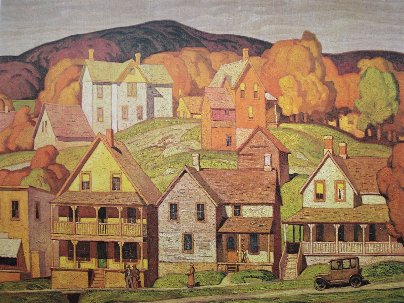-

-
Emily Carr
CanadaArt Brokerage: Emily Carr Canadian Artist: b. 1871-1945. Emily Carr (December 13, 1871 – March 2, 1945) was a Canadian artist and writer heavily inspired by the Indigenous peoples of the Pacific Northwest Coast. One of the first painters in Canada to adopt a Modernist and Post-Impressionist painting style, Carr did not receive widespread recognition for her work until late in her life. As she matured, the subject matter of her painting shifted from aboriginal themes to landscapes—forest scenes in particular. As a writer, Carr was one of the earliest chroniclers of life in British Columbia. The Canadian Encyclopedia describes her as a "Canadian icon". In 1898 Carr made the first of several sketching and painting trips to aboriginal villages, visiting Ucluelet on the west coast of Vancouver Island, home to the Nuu-chah-nulth people, then commonly known to English speaking people as 'Nootka'. While on holiday in Alaska with her sister Alice in 1907, Carr again came into contact with indigenous peoples in remote villages and determined to use her art to document the sculptural and artistic legacy of the aboriginal people she encountered there. It was at the exhibition on West Coast aboriginal art at the National Gallery in 1927 that Carr first met members of the Group of Seven, at that time Canada's most recognized modern painters. Lawren Harris of the Group became a particularly important support: "You are one of us," he told Carr, welcoming her into the ranks of Canada's leading modernists. The encounter ended the artistic isolation of Carr's previous 15 years leading to one of the most prolific periods, and the creation of many of her most recognizable works. Through her extensive correspondence with Harris, Carr also became aware of and studied northern European symbolism. The Group influenced Carr's direction, and Lawren Harris in particular, not only by his work, but also by his belief in Theosophy, which Carr struggled to reconcile with her own conception of God. Carr's "distrust for institutional religion" pervades much of her art. She became influenced by Theosophic thought, like many artists of the time, and began to form a new vision of God as nature. She led a spiritual way of life, rejecting the Church and the religious institution, and painted raw landscapes found in the Canadian wilderness, mystically animated by a greater spirit. Carr exhibited in 1924 and 1925 at the Artists of the Pacific Northwest shows in Seattle, and fellow exhibitor Mark Tobey came to visit her in Victoria in the autumn of 1928 to teach an advanced course in her studio. Working with Tobey, Carr furthered her understanding of contemporary art, experimenting with Tobey's methods of full-on abstraction and Cubism, but was reluctant to go to Tobey's extremes. Listings wanted.
Read More + - Create Listing 0 Artworks for sale 7 Followers
-
We are actively seeking listings for Emily Carr.
Create a free listing or free wanted ad.
-
Art Wanted
We have interested buyers looking for these artworks by Emily Carr:
- CREATE AD
- Art Brokerage Requests (1)








































